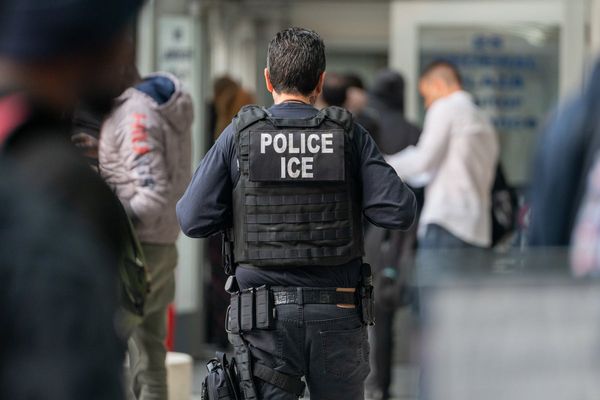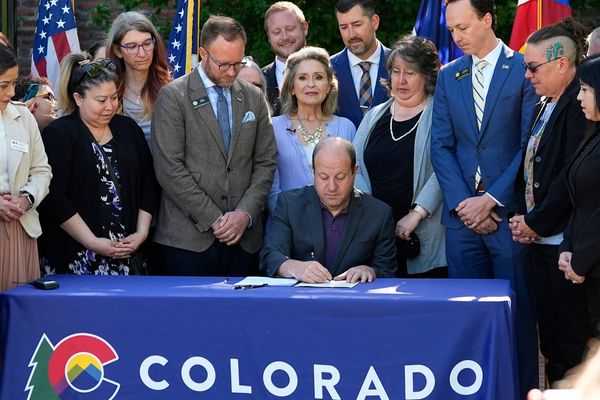Vladimir Putin has confirmed a “partial” drawdown of Russian forces near the Ukrainian border, in a step that could begin a de-escalation of tensions but has left western officials sceptical that the Kremlin has ruled out an attack in the near future.
The size of the withdrawal remains unclear and it may involve only a fraction of Russia’s forces at the border, which western officials estimate at more than 130,000 troops, at least 60% of the country’s ground forces.
Western officials said there were no immediate signs of a Russian drawdown. “So far we have not seen any de-escalation on the ground from the Russian side. Over the last weeks and days we have seen the opposite,” Jens Stoltenberg, Nato’s secretary general, said on Tuesday.
Security officials said they had seen “reinforcements of combat and other capabilities close to the Ukraine border”.
Russia has always denied planning to invade Ukraine, saying it can exercise troops on its own territory as it sees fit. It has been pressing for a set of security guarantees from the west, including a guarantee that Ukraine will never join Nato.
Asked for the reason for the drawdown on Tuesday, Putin was not forthcoming. “It’s a partial withdrawal of troops from the areas of our exercises,” he said in response to a question during a press conference with the German chancellor, Olaf Scholz. “What is there to comment on?”
In another sign of Russia turning the screw on Ukraine, the State Duma voted on Tuesday to ask Putin to recognise the independence of the two Russian-controlled separatist regions in the east of the country.
Putin, hinting that he intended to use them as leverage, said he would not recognise the “republics” immediately, but called on Nato to negotiate with him on Russia’s security guarantees before it was “too late”.
“We hear that Ukraine is not ready to join Nato; we know that,” Putin said. “At the same time, they say it’s not going to join tomorrow. But by the time they get ready for it, it may be too late for us. So we have to decide this question now, right now, in the very near future, we have to have a negotiation process for this.”
The drawdown was first announced on Tuesday morning by the defence ministry spokesperson Igor Konashenkov, who described ongoing exercises that involved forces from “practically all military districts, fleets, and the airborne forces”.
“Units of the southern and western military districts, which have accomplished their missions, are boarding trains and trucks and will head for their garrisons later today,” Konashenkov said.
The defence ministry released video apparently shot in Crimea of Russian tanks and other heavy weaponry from two brigades being loaded on to railway cars. Otherwise, the Russian military gave little information about which forces would be withdrawn and where they would be sent.
Nato’s Stoltenberg said: “We believe there is some ground for cautious optimism based on the signals and signs coming from Moscow, that they are ready to engage in a diplomatic effort and we are ready to continue to engage in a diplomatic effort.”
Ukrainian officials said they would not take Moscow at its word about a drawdown. “Many statements are constantly being made from [Russia], so we have a rule: we’ll believe it when we see it,” said Dmytro Kuleba, Ukraine’s foreign minister. “If we see the withdrawal then we will believe in de-escalation.”
The Kremlin spokesperson Dmitry Peskov accused the west of manufacturing “manic information madness”. “We’ve always said the troops will return to their bases after the exercises are over. This is the case this time as well,” he said.
Peskov said Putin had joked about US intelligence reports that he could give an order to launch an invasion as early as this week. “He asks [us] to find out if the exact time, to the hour, of the start of the war has been published. It’s impossible to be understanding of this manic information madness.
Russian state media pundits rushed to praise Putin’s use of military pressure on the west. “Before, no one wanted to talk to us about security; now look at the line of those wanting to visit Moscow in February,” wrote the RT head, Margarita Simonyan, in an apparent reference to visits by leaders such as Scholtz and Emmanuel Macron. “At the same time, Kyiv’s economy has been torn to shreds … it’s a small thing but nice to see.”
Russia’s rouble currency posted gains after the announcement, indicating that investors hoped this would mark the beginning of a de-escalation of tensions between Russia and the west.
Scholz arrived in Moscow on Tuesday for meetings with Putin, the latest in a series of visits and phone calls from western leaders seeking to avert a potential war through negotiations.
Putin said he was “ready to work further” with the west on how to de-escalate the crisis on the Ukrainian border, while Germany’s chancellor said the diplomatic channels were “not yet exhausted”, at a joint press conference marked by subtle swipes and simmering historical resentment.
“We are ready to work further together, we are ready to go down the negotiations track,” said Putin, who denied that his country was seeking an invasion of Ukraine. “As to whether we want [war]: of course not. That’s why we have made these proposals about negotiations, the results of which should be an agreement about equal security for all countries, including ours.”
The US and other western countries have called a Russian drawdown of its troops on the border a precondition for successful negotiations on the Kremlin’s demands for “security guarantees”.
Russia has previously announced the conclusion of military exercises near the Ukrainian border, but social media and satellite photography taken in the following days have not shown considerable changes to Russia’s force posture. Those exercises involved only a small number of troops.
Many of the troops located close to the Ukrainian border are not involved in any formal training. When questioned on the buildup, Russia has said it has the right to move troops as it wishes within its own territory.
Russia is holding large joint exercises with Belarus scheduled to end on 20 February. Western countries have said those drills could be used as cover to prepare for an attack on Ukraine, while Russia has said the troops will return to base once the exercises have concluded.
On Tuesday, Russia also deployed long-range nuclear-capable bombers and fighter jets carrying state-of-the-art hypersonic missiles to its airbase in Syria for massive naval drills in the region.
Defense minister Sergey Shoigu met Syria’s president Bashar al-Assad after arriving in Syria to oversee the drills that mark the biggest Russian naval deployment to the Mediterranean Sea since cold war.
Additional reporting by Daniel Boffey in Brussels and Patrick Wintour in London







